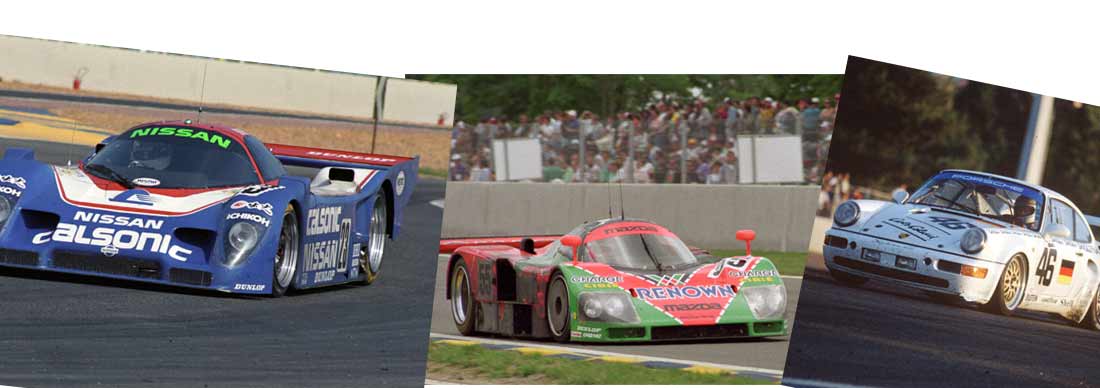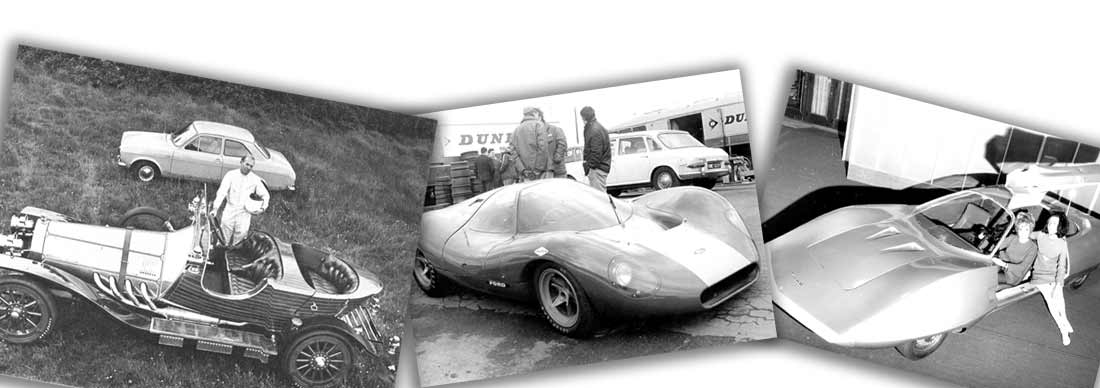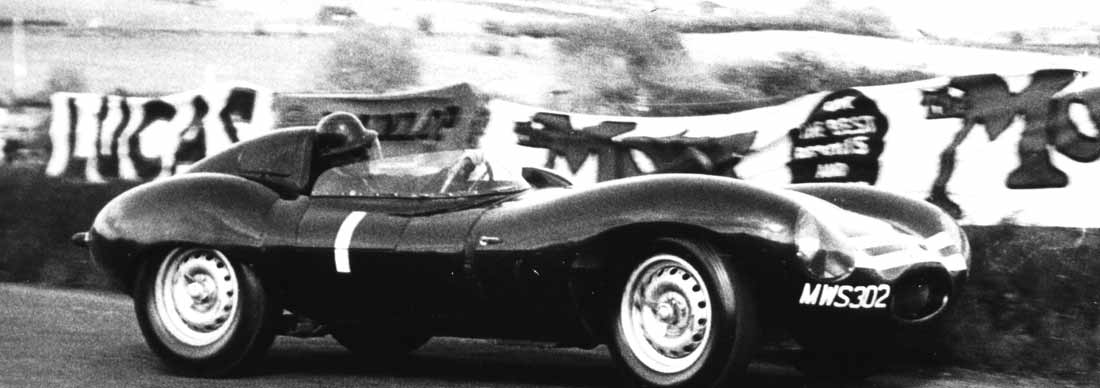
Première Night, part 5 - Carbon Brakes, ABS and natural Gas
Run from 1982 till 1990, Group C was arguably the most spectacular period in sportscar racing, with a record number of manufacturers involved and spectators attending. To master the fuel consumption limits, the engine designers had to pull out all stops, but the team’s technical suppliers weren’t exactly sitting still either. By 1990, composite materials had slowly replaced the GRP for the bodyworks and some monocoques were now also being made of carbon fibre rather than aluminium.
The next items to get the carbon treatment were the brake discs, developed by French company Carbone Industries and used for the first time at Le Mans by Nissan. With a reported 1,100bhp on tap for qualifying, the Nissans certainly needed the extra and longer-lasting stopping power, especially now the Hunaudières Straight had been broken up by two chicanes, thus creating two more major braking zones. In fact, with the carbon brakes only operating at their best at a certain temperature, it would have been impossible to use them without the chicanes for they would have cooled off too much to be operational arriving at Mulsanne Corner after a four-mile flat-out blast down the straight.

Above: In 1990 Nissan debuted carbonfibre brake discs, made by Carbone Industries from France. The Nissan R90CP lasted to finish fifth overall (archives JM Teissedre).
Only three of the five works Nissans (plus one of the two privateer cars) ran the carbon discs. Nissan’s monster bid for Le Mans glory in the final year of Group C started falling apart at the seams on the formation lap for the race when the first car broke its gearbox, and 24 hours later a fifth place finish by the Nismo Japan- entered R90CP was all Nissan could take home. The following year, in 1991, compatriots Mazda not only scored the first-ever Japanese win and the first victory for a rotary engine, but also for carbon brakes and pads.

Above: One year later, Mazda scored the first-ever (and to date only) win for a Japanese manufacturer, for the rotary engine and for carbonfibre brakes with the 787B.
The first half of the 1990s was marked by a major crisis in sportscar racing. After the failure of the 3.5-litre F1-engine formula, the Sportscar World Championship had disappeared and with it the big-spending manufacturers. With Le Mans now run as a stand-alone event, the ACO had opened up their race to GT cars again. Needless to say Porsche was more often than not the weapon of choice for those teams trying their luck at Le Mans in a GT car, and both the development and production facilities at Weissach were working overtime to supply the numerous customers with the right tools.

Above: In 1993 it was again Porsche who debuted technology which would soon become standard on many road cars around the world when the Porsche 911 Turbo S LM of legends Stuck, Röhrl and Haywood ran ABS brakes for the first time.
As such, the Porsche works team entered a one-off super-911 based on the 964-generation of the Stuttgart classic, the 911 Turbo S Le Mans. Apart from featuring huge wheels, massive power and a superlative driver line-up (Le Mans winners Stuck and Haywood with rally legend Walter Röhrl), the car was also equipped with ABS, as was now allowed per the rules. Unfortunately, a collision with a slower car halted the car’s remarkable progress up until that point. The development of ABS in racing would continue, however, and Porsche’s 16th overall Le Mans victory came courtesy of a 911 GT1 98 equipped with the Anti-Blockier System in 1998.
The second half of the 1990s saw the rebirth of an international, FIA-sanctioned GT championship and the manufacturers returned to Le Mans, with exotic prototypes thinly disguised as road cars. At the same time, privateers got even more creative in their quest for technological diversity. In 1995, Frenchman Alain Lebrun used a 1993-spec WR (the small single-seater sports cars the ACO had allowed in to swell the grid a few years earlier) equipped with a Peugeot engine running on liquefied petroleum gas, or LPG. The idea was, at a time when people were becoming more and more environmentally conscious, to prepare for the future by having the first ‘green’ car on the grid.

Above: (1996 WR-Gaz engine): For three years Alain Lebrun tried to qualify the first-ever gas-powered racecar, but didn’t succeed. The WR-Gaz project was shelved in 1998.
Unfortunately, the underfunded project didn’t make it past the pre-qualifying session where the car was slowest by minutes. Another attempt the following year yielded the same result, though now the deficit had been brought down to about a minute. A third attempt in 1998 ended in being disillusioned again and it was the last time an LPG-engined car was seen at Le Mans. Almost unnoticed, 1996 also saw the first Korean-engined car trying to make the cut. Ex-F1 driver Betrand Gachot was behind the project and had equipped a similar WR chassis with a two-litre turbocharged SsangYong powerplant, but his attempt also failed at pre-qualifying, though by only a handful of seconds. Like the LPG engines, SsangYong wasn’t seen again in La Sarthe.
Hybrid and hydrogen
Awareness for the environment and the effects of global warming and greenhouse gasses had set many people thinking about solutions, though the automobile industry was traditionally slow in trying to set an example. Once again, it was left to “the spirit of Le Mans” and the entrepreneurship of individuals to lead the way.
One such individual was Dr Don Panoz, an American business tycoon who had decided to create his own make of supercars. Designed by Adrian Reynard, the front-engined Panoz Esperante GT1-R made its Le Mans debut in 1997, the first new American manufacturer to come to France since Dodge in 1976. It had been nearly two decades since a front-engined car was last seen in Le Mans, but Panoz was a firm believer in the concept.

Above: More than 20 years ago, in 1998, American entrepreneur Dr. Don Panoz entered the first hybrid car at Le Mans. The Panoz Esperante GT1-R, nicknamed ‘Sparky’, didn’t qualify but raced later that year in the inaugural Petit Le Mans at Road Atlanta.
Though none of the cars finished the race that year, the good doctor came back in 1998 with yet another daring idea: one of his cars ran a hybrid electro-fuel engine. Finished on-site and driven by James Weaver and Perry McCarthy, ‘Sparky’, as the car was affectionately known, unfortunately failed to pre-qualify. By then, however, Dr Panoz had reached an agreement with the ACO to create his own American Le Mans Series States-side and ‘Sparky’ would still get to race at Petit Le Mans later that year.
The hybrid Panoz never came back to Le Mans, but a decade and a half later the first overall victory for a hybrid car occurred when, in 2012, Audi scored its 11th win, with the hybrid-diesel R18 e-tron Quattro. From 2013 onwards, LMP1 factory teams would be required to only run hybrid cars and in 2015 Porsche scored a first hybrid-petrol win.
The ever faster pace of automotive development in the 21st century had the ACO come up with a specific one-car class for experimental vehicles, called ‘Garage 56’. The candidate entry did not have to conform to specific regulations but had to present new ideas or technologies in race car development. In 2012, the first tenant of the 56th pit box was the odd looking, Nissan-engined DeltaWing. The car didn’t feature new technology per se, just a new way of thinking and packaging, and was quite successful at that. Only an avoidable side-swipe by a faster car prevented the DeltaWing from finishing in the top 10.
The 2013 candidate selected by the ACO was a different beast altogether. A team of Swiss engineers had set upon developing and building a hybrid electric/hydrogen fuel cell race car, dubbed the GreenGT H2. The GreenGT H2 race car was based on a 2009 concept of an electric competition vehicle powered solely by lithium-ion batteries. When a greater autonomy was needed, the engineers turned to a hydrogen fuel cell to provide additional energy to power the electric engines. When that seemed to work, GreenGT set about developing a more powerful yet more compact fuel cell and applied for the ‘Garage 56’ ticket for 2013. The ACO agreed, but the GreenGT H2 would only be seen in Le Mans in static form. Persistent overheating issues meant the team had to throw in the towel just three weeks before the race. The GreenGT H2 would have been the most complex technological innovation to have ever raced at Le Mans, but in the end it would be nothing but a photo op.
Since then, the likes of Audi, Porsche and Toyota further fine-tuned their hybrid technology and won as they pleased. And while it is anybody’s guess what the future will bring in terms of automotive development, it is very doubtful the car makers’ technical achievements will ever match in any way the human challenge the first quadruple amputee racing at Le Mans mastered in 2016…






Leave a comment
This site is protected by hCaptcha and the hCaptcha Privacy Policy and Terms of Service apply.